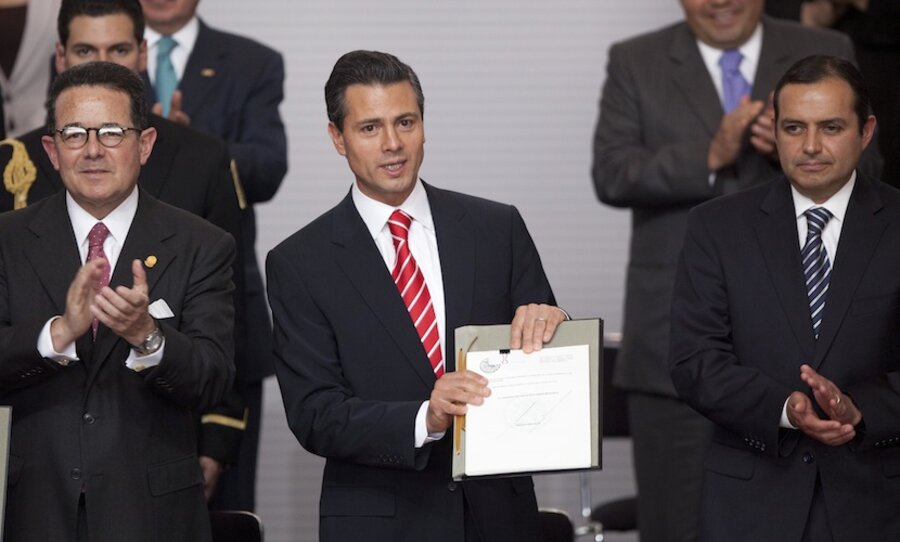A model to end Washington gridlock: Mexico
ññThe moment is hard to predict. When does a nation or a person, after experiencing enough self-inflicted suffering, finally seek reform?
In Washington, the years of political gridlock in Congress have yet to lead to such a moment of reforming remorse. But perhaps the United States should look to a possible model – just to its south.
Since December, when Mexico’s three main political parties pledged to seek 94 reforms, that country has been on a turnaround from past stalemates and policy misdirections. It is as if Mexico had hit bottom, only to decide that its Congress must set aside some differences for the sake of the future.
Gridlock was finally seen as simply too costly. The nation’s drug-fueled gang violence had gone on too long. And new leaders in each party had opened a door for change.
The so-called Pact for Mexico signed by top political leaders has enabled President Enrique Peña Nieto to overcome legislative paralysis and either pass or present serious reforms. To the surprise of many, his own Partido Revolucionario Institucional (PRI), which once represented the entrenched status quo, has taken on big interests that have long held Mexico back – in education, energy, broadcasting, and telecommunications.
Perhaps the most historic shift came when PRI approved a proposal to open Pemex, the state oil monopoly, to private investment. This potential reform still faces hurdles but is now seen as essential to reverse a decline in petroleum production and to wean the government off an overreliance on oil revenues.
The country’s recent boom in exports – which some see as enabling the Mexican economy to become an “Aztec tiger” – depends on this key reform. PRI also approved tax reforms to help pay for new social programs and new infrastructure.
Another critical reform was passage of a constitutional amendment that sets up the chance for drastic improvement in education. The government has also challenged the powerful teachers union by arresting its lavishly wealthy leader, Elba Esther Gordillo, on corruption charges.
Mr. Peña Nieto is also winning legislative support for beefing up the nation’s pro-competition laws, sending notice that he will break up semi-monopolies in the TV broadcasting and cellphone industry. The latter means taking on the world’s richest man, Carlos Slim, whose Telmex controls 80 percent of Mexican landlines and 70 percent of the mobile-phone market.
The new president has smartly used his first 100 days in office to build on the reform consensus of the major parties. “The intensity won’t be passing. The pace of work will keep up. We didn’t come just to govern, but to transform,” he declared last week.
Many Mexicans have yet to see the results of these reform ideas. They remain skeptical. And with elections coming up soon, the political consensus for reform will be tested in the contests for power.
But at least Mexicans have witnessed a rare moment in which their bickering political leaders came together for change. At a time when the US Congress is struggling even to pass a budget, Mexico provides a model for what can be done when a nation says “enough” to self-imposed hardship. The lesson has been learned.





